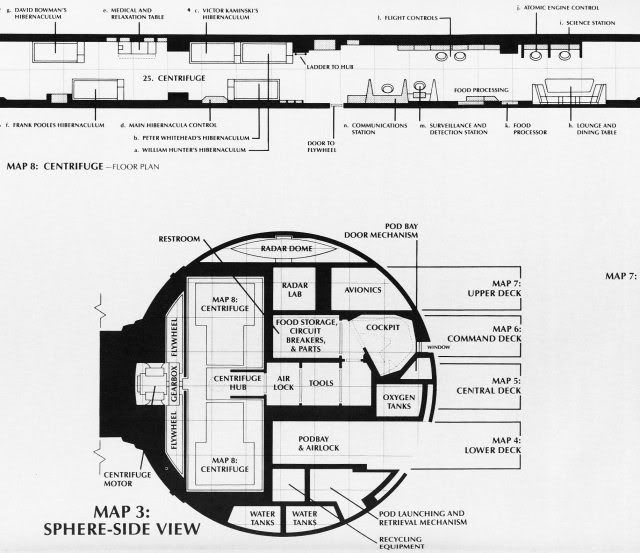Actually it does; you simply need another similar linkage at the other side.Jim wrote:That works if the rotational portion is at the end of the ship, like an eraser on a pencil. It does not work if it is in the middle of the ship.Graham Kennedy wrote:No, you simply need a joint between the two that can take the necessary stresses.Jim wrote:The central axis must have pieces that continue through the entire length of the shaft in order to keep the structural integrity.
Look, it works like this :
The red striped part is stationary. The blue striped part rotates with the outer hull. All you need is a joint between the red and blue that can take the strains it needs to, and you're good to go. You float down a stationary axial corridor; you reach a section where there's a joint in the walls, and the corridor ahead is rotating around you. You're now in the axis of the rotating hull. You reach the hole, float on out, and climb down the ladder. Hey presto.
And incidentally, in discovery there was no through route - as evidenced by this layout :

The Carousel section only joins to the rest of the hull on one side, not both.
Well for one, there's no rule that the command section has to be at the front. But even if you do, what do you mean there's no direct connection? You simply go to the axis and float along. You have to go through a section of the axis that's rotating, sure, but so what?You would have the command section at the front in red, the middle portion blue and then the engines in the back red. In this situation the front and back are not directly connected.





